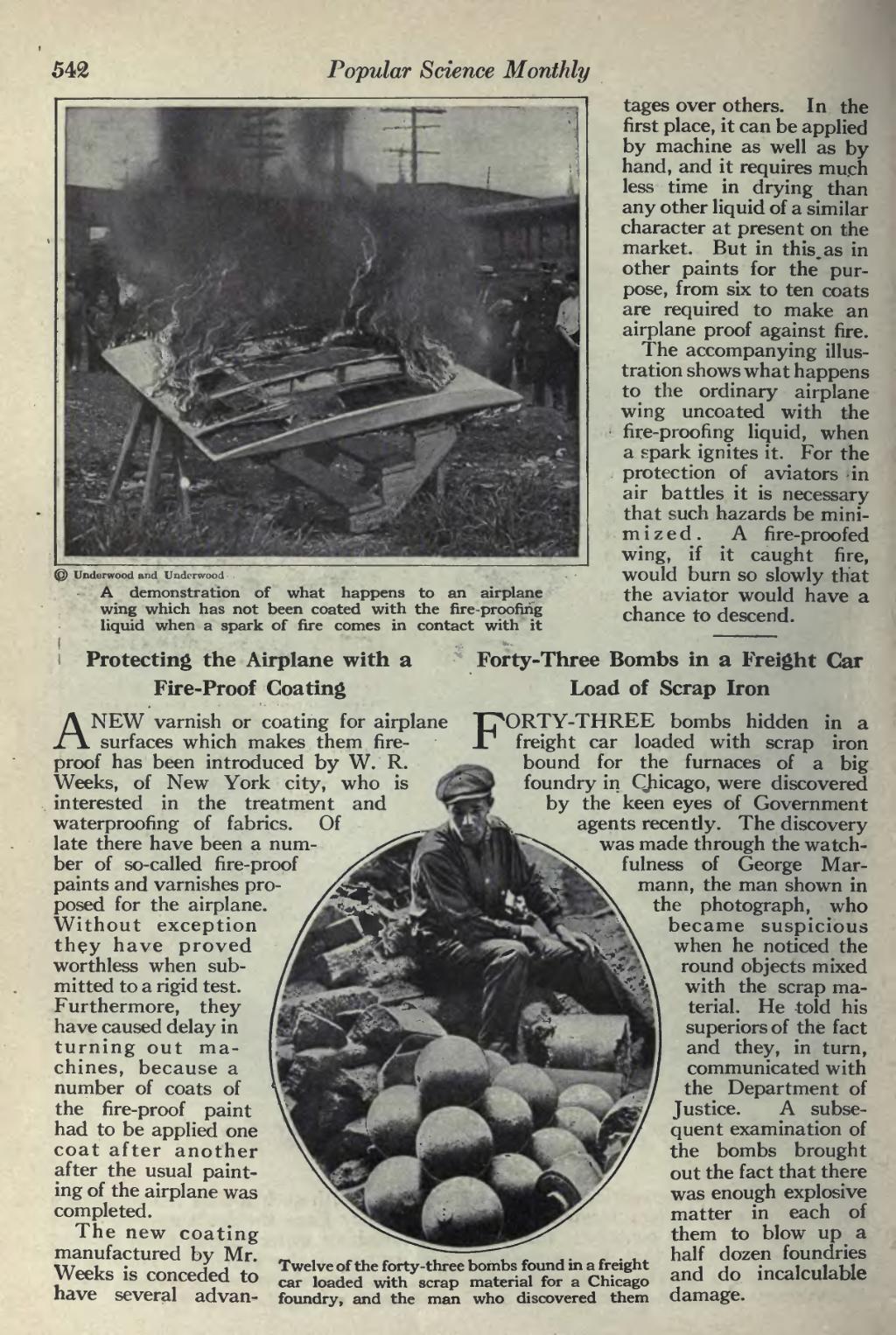542
��Popular Science Monthly
�� � �~J—
�i
� �.lapis
�2fidj^^^
�n
�1
� � � ��© Underwood and Underwood
A demonstration of what happens to an airplane wing which has not been coated with the fire-proofing liquid when a spark of fire comes in contact with it
��tages over others. In the first place, it can be applied by machine as well as by hand, and it requires much less time in drying than any other liquid of a similar character at present on the market. But in this, as in other paints for the pur- pose, from six to ten coats are required to make an airplane proof against fire. The accompanying illus- tration shows what happens to the ordinary airplane wing uncoated with the fire-proofing liquid, when a spark ignites it. For the protection of aviators in air battles it is necessary that such hazards be mini- m i z e d . A fire-proofed wing, if it caught fire, would burn so slowly that the aviator would have a chance to descend.
��Protecting the Airplane with a Fire-Proof Coating
ANEW varnish or coating for airplane surfaces which makes them fire- proof has been introduced by W. R. Weeks, of New York city, who is interested in the treatment and waterproofing of fabrics. Of late there have been a num ber of so-called fire-proof paints and varnishes pro- posed for the airplane. Without exception they have proved worthless when sub- mitted to a rigid test. Furthermore, they have caused delay in turning out ma- chines, because a number of coats of the fire-proof paint had to be applied one coat after another after the usual paint- ing of the airplane was completed.
The new coating manufactured by Mr. , Weeks is rnnr P HpH ^ Twelve of the forty-three weeics is conceded to ^j. loaded with scrap
have several advan- foundry, and the man
���Forty-Three Bombs in a Freight Car Load of Scrap Iron
FORTY-THREE bombs hidden in a freight car loaded with scrap iron bound for the furnaces of a big foundry in Chicago, were discovered by the keen eyes of Government agents recently. The discovery was made through the watch- fulness of George Mar- mann, the man shown in the photograph, who became suspicious when he noticed the round objects mixed with the scrap ma- terial. He told his superiors of the fact and they, in turn, communicated with the Department of Justice. A subse- quent examination of the bombs brought out the fact that there was enough explosive matter in each of them to blow up a half dozen foundries ££tfS?rc£2£ 5"d do incalculable
who discovered them damage.
�� �
